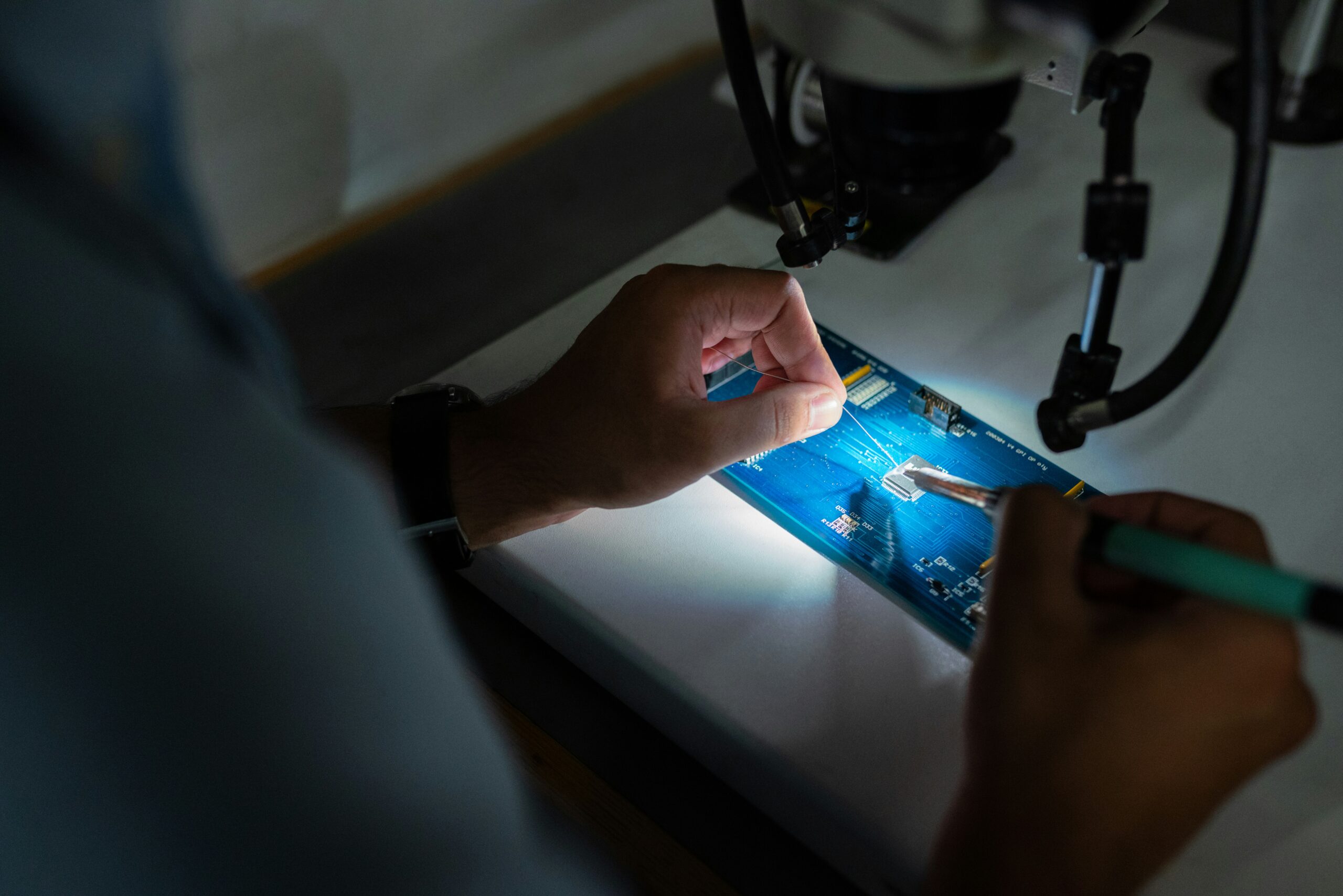Introduction: The UAE-US Investment Landscape
The economic relationship between the United Arab Emirates (UAE) and the United States has evolved significantly over the years, marked by mutual interests and substantial financial commitments. Over the past few decades, the UAE has emerged as one of the largest foreign investors in the United States, reflecting a robust and strategic investment landscape that benefits both nations. Investment flows between these countries have not only facilitated the transfer of capital but have also fostered a deepening partnership in various sectors.
Historically, the UAE has concentrated its investments in sectors such as real estate, technology, energy, and manufacturing. The country’s sovereign wealth funds, particularly the Abu Dhabi Investment Authority (ADIA), have played a pivotal role in channeling substantial resources into the American economy. This influx of capital has supported numerous initiatives, from high-profile real estate developments in urban centers to investments in innovative technology companies driving the digital economy forward.
Moreover, the UAE’s strategic investments in the US have contributed to job creation and economic development, enhancing bilateral trade relations. The collaboration extends beyond financial transactions, encompassing shared interests in security, innovation, and sustainability. The relationship has been characterized by a commitment to long-term investment strategies that secure stable returns for both sides. Furthermore, the UAE has actively sought to diversify its investment portfolio, seeking to harness the innovation and technological advancements present in the US market.
As the UAE continues to diversify its economy away from oil dependency, its engagement with the US marketplace becomes increasingly crucial. The alignment of the two nations’ economic objectives signals a promising future for investment and collaboration. The dynamism of the UAE-US investment relationship underscores its significance not only in shaping regional economic trends but also in promoting global business collaboration.
The Scale of UAE Investments: A Trillion Dollar Vision
The United Arab Emirates (UAE) has emerged as a formidable player in the global investment landscape, particularly in the United States, where its investments have crossed the trillion-dollar threshold. This strategic financial engagement reflects the country’s ambitious vision of diversifying its economy and enhancing its global presence. The UAE has established several prominent investment vehicles, including the Abu Dhabi Investment Authority (ADIA) and the Mubadala Investment Company, both of which play crucial roles in managing and directing these significant capital inflows into the US market.
The Abu Dhabi Investment Authority, one of the largest sovereign wealth funds in the world, manages assets estimated at around $700 billion. Its investments span various sectors, including technology, healthcare, real estate, and energy, underscoring a commitment to not only financial returns but also advancing innovation and sustainability initiatives. Notable investments include significant stakes in tech giants, with ADIA investing billions in companies such as Uber and through partnerships with investment firms that focus on emerging technologies.
Mubadala Investment Company, another major entity, boasts a diverse portfolio that exceeds $250 billion. Over the years, Mubadala has made influential investments in the US, such as its stake in the aerospace company, OEM Boeing, and collaborative ventures with Silicon Valley firms, emphasizing its focus on cutting-edge industries. Such initiatives exemplify the UAE’s determination to foster innovative partnerships that contribute to long-term growth and economic resilience.
The scale of UAE investments in the US is emblematic of a broader strategic intent to integrate into the global economic framework while fostering bilateral relations. This trillion-dollar vision not only highlights the UAE’s robust financial capabilities but also signifies its pivotal role in global economic synergy, reaffirming the UAE’s position as a central player in international finance and investment strategies.
Key Sectors Attracting UAE Investments
The United Arab Emirates (UAE) has strategically diversified its investment portfolio in the United States, focusing on several key sectors that showcase its economic ambitions and interests. Among these sectors, technology, renewable energy, real estate, and healthcare prominently attract substantial investments from UAE entities.
In the technology sector, the UAE has invested heavily in innovative startups and established firms within Silicon Valley and beyond. One notable example is Mubadala Investment Company’s partnership with various U.S. tech giants, which fosters advancements in artificial intelligence and cybersecurity. This investment not only enhances technological growth in the UAE but also facilitates knowledge exchange and access to groundbreaking innovations, thereby strengthening regional tech ecosystems.
The renewable energy sector represents another significant area of interest. The UAE has formed partnerships with American companies to develop clean energy projects, with Abu Dhabi’s Masdar leading in solar and wind energy investments. The joint ventures contribute to the global movement towards sustainability and help fulfill the UAE’s commitment to reducing carbon emissions. Projects such as the Noor Abu Dhabi Solar Plant exemplify this collaborative spirit in addressing global energy challenges.
Real estate is a cornerstone of UAE investments in the U.S. market, reflecting the nation’s focus on developing lucrative properties. High-profile investments include Dubai’s Emaar Properties acquiring a stake in iconic projects like the One World Trade Center, highlighting the region’s global ambitions. These investments are not merely financial; they also signify a commitment to architectural excellence and urban development in thriving locales across the United States.
Lastly, the healthcare sector has seen increased investment from UAE-based healthcare institutions. Collaborations with American healthcare providers aim to improve patient care and develop leading medical technologies. Partnerships with institutions such as Johns Hopkins University underscore the UAE’s intent to enhance healthcare services domestically while supporting medical research and innovation, thus benefiting both nations.
The Role of Sovereign Wealth Funds
The United Arab Emirates (UAE) has established itself as a global investment powerhouse, primarily through its sovereign wealth funds (SWFs), which play a pivotal role in facilitating investments in the United States. The two most prominent among these funds are the Abu Dhabi Investment Authority (ADIA) and the Mubadala Investment Company. Both entities have garnered significant attention for their strategic investment approaches, enabling the UAE to cultivate strong economic ties with American businesses.
ADIA, one of the world’s largest sovereign wealth funds, employs a diversified investment strategy, allocating assets across various sectors including technology, healthcare, real estate, and financial services. By investing in established American companies as well as promising startups, ADIA not only seeks profitable returns but also contributes to fostering innovation and economic growth in the US. Its expansive global reach spans multiple geographies and asset classes, ensuring resilience and adaptability in fluctuations in the market.
Similarly, Mubadala Investment Company engages in strategic investments with an emphasis on sectors that promise growth and sustainability. The company has invested significantly in the American economy, particularly in technology companies and clean energy initiatives. Through partnerships and collaborative ventures with American firms, Mubadala has further strengthened bilateral ties and reflected the UAE’s commitment to diversifying its economy beyond oil dependency.
The contributions of these sovereign wealth funds extend beyond mere capital infusion; they play a crucial role in promoting knowledge transfer, innovation, and expertise across industries. By facilitating joint ventures and strategic partnerships with American corporations, the UAE’s sovereign wealth funds help enhance the competitiveness of both economies. Through their proactive investment strategies, they not only achieve financial growth but also contribute to building a robust, interconnected economic landscape beneficial to both the UAE and the United States.
Economic and Political Implications of the Investments
The United Arab Emirates (UAE) has made notable financial commitments through strategic investments in the United States, which carry significant economic and political implications for both nations. These investments enhance bilateral relations, fostering diplomatic ties that can be beneficial in addressing various global challenges. The UAE’s investments, estimated in the trillions, signify a commitment to deepen collaboration and mutual trust, which can lead to a more stable geopolitical landscape.
From an economic perspective, the UAE’s investments give rise to increased trade opportunities. By infusing capital into key sectors such as technology, infrastructure, and renewable energy, the UAE not only stimulates growth within the US economy but also paves the way for job creation and innovation. These investments contribute directly to the improvement of infrastructure and technological advancements, thus fostering a more competitive economic environment in both countries.
Moreover, the financial commitments by the UAE can significantly influence trade policies. As the two nations strengthen their economic interdependence, it becomes increasingly important to align policies that facilitate smoother trade transactions and reduce barriers. This fosters a mutually beneficial environment where both economies can thrive, allowing the UAE to diversify its economic interests while the US gains a stable partner in the Middle East.
However, it is crucial to acknowledge potential challenges that may arise from these investments. There may be concerns regarding over-reliance on external capital, which could impact domestic industries negatively. Additionally, geopolitical tensions in the Middle East may affect investor confidence, calling for a balanced approach that takes into account the sensitivities of both nations. Navigating these complexities will be essential for maximizing the positive implications while minimizing risks associated with such extensive financial commitments.
Success Stories: UAE Companies Leading the Charge
The economic landscape in the United States has witnessed an influx of investments from UAE-based companies, many of which have established a significant presence across various industries. This article highlights exemplary case studies of UAE enterprises that have successfully integrated into the US market, showcasing their innovative strategies and collaborations with American partners.
One notable example is the Mubadala Investment Company, a state-owned investment fund that has strategically placed investment capital in diverse sectors such as technology, healthcare, and renewable energy in the US. With a commitment to fostering innovation, Mubadala has partnered with various American firms, including a partnership with Uber to boost transportation services in the Middle East. This collaboration not only served to enhance Uber’s operational footprint but also facilitated knowledge transfer and technological advancements deployed in both regions.
Moreover, EMIRATES Group has made significant strides in the travel and tourism sector through its subsidiary, Emirates Airlines. The airline has expanded its routes to numerous U.S. cities, establishing direct flights, which have greatly contributed to tourism and business travel between the UAE and the U.S. This initiative not only supports local economies by promoting UAE tourism but also strengthens bilateral relations, evidenced by the tourism exchanges that have surged following such improvements in connectivity.
Additionally, the Dubai-based DP World has made remarkable advancements in the logistics and transportation sector through its acquisition of a stake in the United States’ top port operator, P&O Ports. This strategic investment has helped boost the efficiency of cargo handling and logistics services across North America, emphasizing the UAE’s commitment to enhancing global trade through infrastructural advancements.
The success of these UAE companies in the US exemplifies a blend of strategic foresight, collaborative innovation, and a shared commitment to fostering economic growth. By leveraging local partnerships and integrating region-specific strategies, these companies continue to pave the way for future investments, benefiting both the UAE and the United States alike.
The Future of UAE Investments in the US
As the United Arab Emirates (UAE) continues to expand its footprint in the United States, the future of UAE investments in the US appears promising, driven by emerging industries and evolving market conditions. Experts predict that the UAE’s investment strategies will increasingly focus on sectors that align with technological advancements and sustainability goals. Industries such as renewable energy, technology, healthcare, and entertainment demonstrate significant potential for growth and collaboration.
Renewable energy, in particular, stands out as a key area of interest. With climate change becoming a pressing global concern, investments in clean energy infrastructure promise profitable returns while aligning with both the UAE’s and US’s environmental initiatives. Experts indicate that partnerships in solar and wind energy projects are likely to be strengthened, especially given the UAE’s commitment to sustainable development.
The technology sector is another focal point for future investments. The rise of artificial intelligence, fintech, and biotechnology presents unique opportunities for collaboration. The UAE’s strategic investments in Silicon Valley-based startups suggest a keen interest in harnessing innovative solutions. This sector is predicted to attract significant capital as the demand for technological advancements continues to rise globally.
Furthermore, geopolitical factors will play a crucial role in shaping the landscape of UAE investments in the US. The evolving relationships between countries, trade agreements, and political stability will influence investment flows. The UAE’s strategic alliances, especially within the context of the Abraham Accords, could facilitate further investments not only in the US but also expand into other markets.
Looking ahead to the next decade, UAE investments in the US are expected to diversify and adapt to changing economic realities. As both countries navigate these transformative trends, their investment partnerships will be pivotal in addressing future challenges and seizing emerging opportunities. Such collaboration is vital for fostering innovation and growth in a dynamic global economy.
Challenges and Risk Factors in Cross-Border Investments
Cross-border investments, particularly between the United Arab Emirates (UAE) and the United States (US), present a unique set of challenges and risks that require careful consideration from investors. One significant challenge is navigating regulatory hurdles. Both nations have distinct legal frameworks governing foreign investments, which can complicate the investment process. In the US, compliance with various federal and state regulations, including the Committee on Foreign Investment in the United States (CFIUS) review process, is essential, as it evaluates potential impacts on national security. Similarly, UAE investors must adhere to their own national regulations while also understanding how US laws may apply to foreign entities.
Economic fluctuations are another critical factor affecting cross-border investments. The economic environment in both the UAE and the US can be influenced by global market trends, commodity prices, and changes in consumer demand. Such fluctuations may lead to unexpected challenges for investors, impacting return on investment and overall project viability. Investors must be prepared for the potential of economic downturns, which can result in lower profit margins and even the need for divestment in extreme cases.
Political tensions can also pose significant risks to cross-border investments. Diplomatic relations between the UAE and the US have historically been stable, but shifts in political climates can create uncertainty. Factors such as trade policies, sanctions, and geopolitical conflicts may lead to shifts in investment sentiment or suddenly impose additional layers of risk for investors. Understanding the broader political landscape is vital for those seeking to engage in or expand upon existing investments.
In light of these challenges, thorough due diligence and strategic planning are key components for success in cross-border investments. Investors must assess potential risks and develop strategies to mitigate them, ensuring a more sustainable and fruitful investment experience.
Conclusion: Building a Stronger Economic Partnership
In summary, the strategic investment initiatives undertaken by the United Arab Emirates (UAE) within the United States (US) present significant avenues for enhancing bilateral economic relations. Through substantial financial commitments across diverse sectors, the UAE has demonstrated its dedication to fostering a cooperative environment conducive to growth and innovation. Notable areas of investment, such as technology, renewable energy, and infrastructure, not only reflect the UAE’s forward-thinking approach but also align with the economic objectives of the US.
The investments made by UAE entities facilitate the transfer of advanced technology and expertise, bolstering the competitiveness of both economies. Furthermore, these financial contributions create numerous job opportunities in the US, thereby enriching the labor market and driving local economies. As both nations continue to grapple with challenges in an ever-evolving global landscape, a cohesive partnership backed by mutual investment can lead to increased resilience and sustainability.
It is imperative to acknowledge that the economic relationship between the UAE and the US extends beyond mere financial transactions; it embodies a shared vision for progress. As both parties navigate future challenges, it will be essential to maintain open lines of communication to explore new opportunities for collaboration. The common goal of fostering innovation, enhancing diversification, and investing in future-ready projects will serve to strengthen this partnership even further.
In conclusion, the multifaceted investments by the UAE in the US underscore the potential for a robust economic partnership. The potential benefits for both nations are vast, encompassing job growth, technological advancements, and overall economic stability. Moving forward, it will be crucial to capitalize on this momentum, paving the way for a future characterized by shared prosperity and enduring cooperation.



